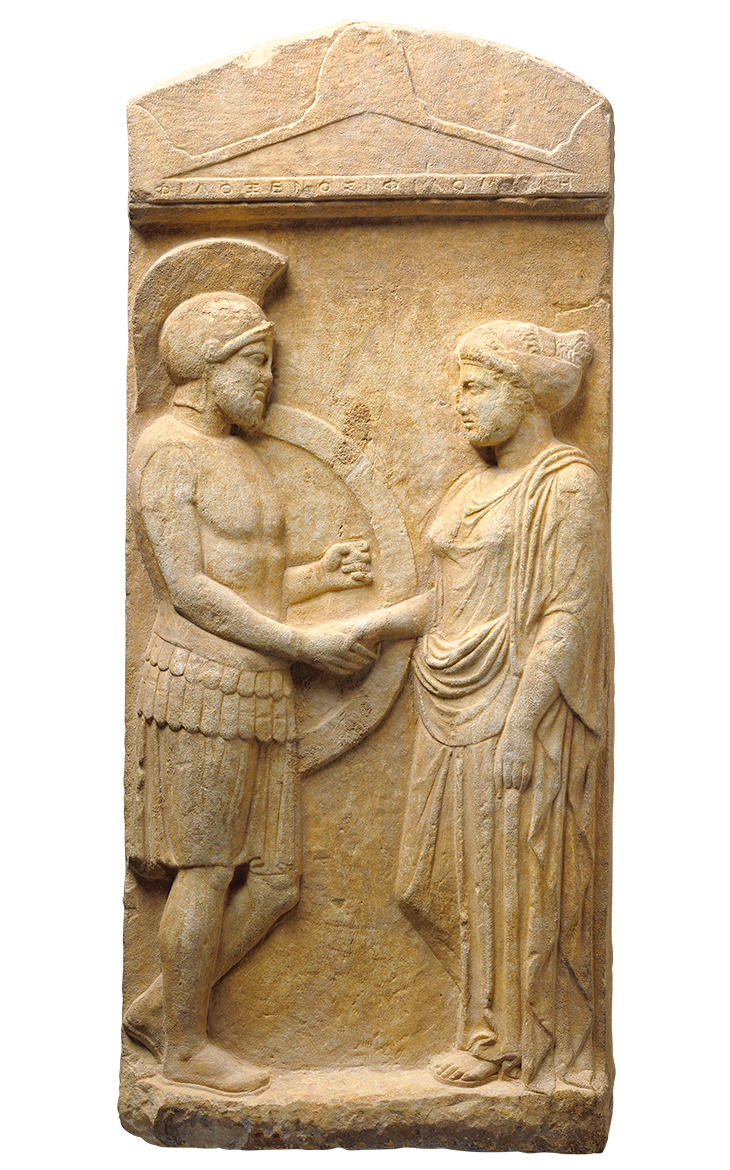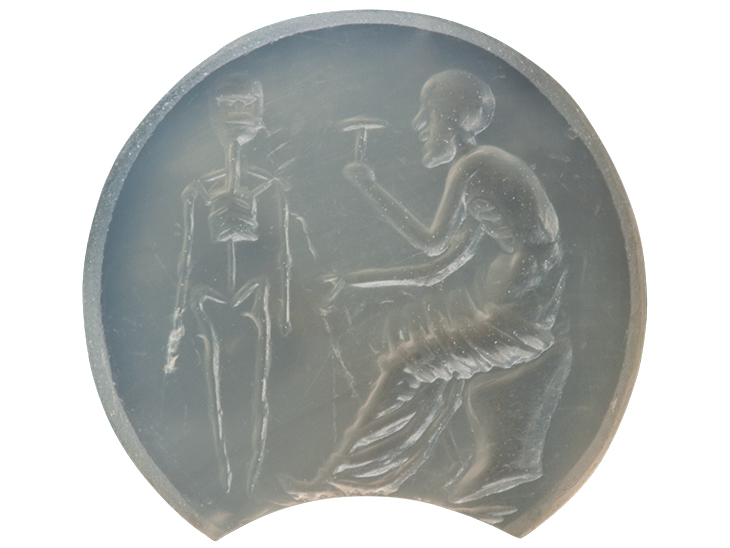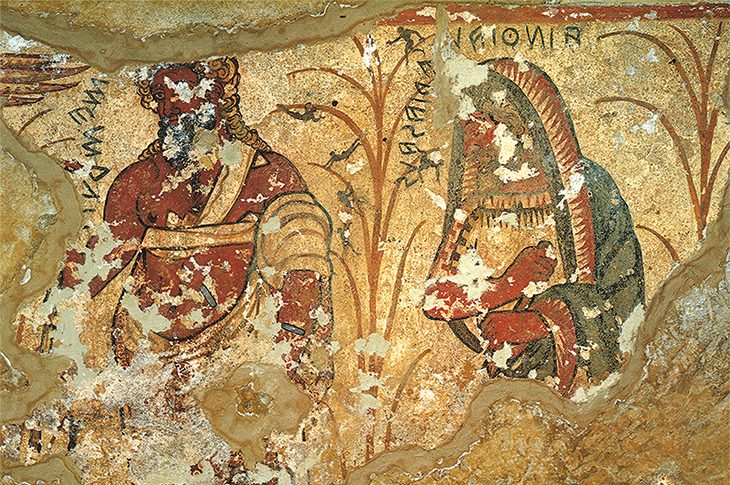Samuel Johnson once remarked that ‘still it is undecided whether or not there has ever been an instance of the spirit of any person appearing after death. All argument is against it,’ he continued, ‘but all belief is for it.’ Many of us today suffer from what has aptly been called ‘brain balkanisation’ when it comes to ghosts, unwilling to relinquish our veneer of rationality but stubbornly harbouring pockets of belief in our own uncanny stories. As a result, it is strangely comforting to find Pliny the Younger writing to a friend around the turn of the second century AD about this very issue:
Our leisure time gives me the chance to learn and you to teach me; so I should very much like to know whether you think that ghosts exist, and have a form of their own and some sort of supernatural power, or whether they lack substance and reality and take shape only from our fears.
 The ghosts with which Patrick R. Crowley is concerned are not quite like the one Pliny goes on to describe, a shuffling old man with a long beard, rattling fetters, anxious to indicate the place where his shackled bones lay buried. Rather, The Phantom Image focuses on ancient Roman funerary imagery: wall paintings in tombs, mosaics, and the decoration of sarcophagi. What, he wonders in this subtle and wide-ranging book, can images of ghosts – those most slippery and evasive of beings – tell us about visual culture in the ancient world?
The ghosts with which Patrick R. Crowley is concerned are not quite like the one Pliny goes on to describe, a shuffling old man with a long beard, rattling fetters, anxious to indicate the place where his shackled bones lay buried. Rather, The Phantom Image focuses on ancient Roman funerary imagery: wall paintings in tombs, mosaics, and the decoration of sarcophagi. What, he wonders in this subtle and wide-ranging book, can images of ghosts – those most slippery and evasive of beings – tell us about visual culture in the ancient world?
Crowley begins with a beguiling image: a polished obsidian mirror set into the wall at eye level at the entrance to the garden of the House of the Gilded Cupids at Pompeii. According to Pliny the Elder’s Natural History, this stone ‘reflects shadows rather than images’, so, on entering, the visitor to the sunlit space might catch a glimpse of themselves as an anonymous, faceless shade, a ghost in a monochrome ghost-garden. Uncanny, disconcerting visual reversals such as this were exploited, Crowley tells us, by armies: Herodotus and Pausanias both relate how the Phocians smeared their faces and armour with plaster to strike fear into their foes on a moonlit battlefield, while Tacitus describes how on dark nights the Harii would paint their shields black to ‘strike terror like an army of ghosts’.
Obsidian mirror in entrance to the peristyle of the House of the Gilded Cupids, Pompeii, 50–79 AD. Photo: Patrick J. Crowley

Most of the imagery Crowley discusses is concerned with the reality of death, with commemorating the dead and imagining them in their new guises, whether embarking on journeys to the underworld or making posthumous appearances, swaddled in the folds of shrouds. Among the most rewarding sections are those in which he takes us down into tomb spaces and thinks about the ways sepulchral imagery acted on the ancient visitor’s senses and emotions. A visitor to one late second-century tomb in the Isola Sacra Necropolis near Rome would have descended steep steps into the vault, lit by flickering lamps, to find a mosaic set in the ground. Unusually, the figures in the mosaic – Charon rowing a woman’s soul across the Styx – are constructed from white tesserae set into a black background, rather than the other way around. Not only do these pale figures, as Crowley observes, emulate the pallor of the living visitor shuffling uncertainly down into the dark tomb, making their own journey, albeit temporary, into the underworld – but in the gloaming the mosaic figures seem to float free from their background, to become ‘activated’ by the surrounding darkness. Rather like the phantasmagoria shows that thrilled London audiences in the late 18th century in which ghostly images were projected on to transparent cloth suspended in a pitch-black room, there is a distinctly theatrical dimension built into this tomb-visiting experience. It is no wonder that ghosts were such ubiquitous presences on the ancient Greek stage. Later in the book, Crowley describes a mechanism known as the ‘Charonian steps’ by which actors playing ghosts could pass underneath the stage and amaze the audience by rising up as if from the realm below.
Grave stele of Philoxenos with his wife Philoumene (c. 400 BC), Athens. Photo: J. Paul Getty Museum, Villa Collection, Malibu, California. Photo: J. Paul Getty Museum

In some contexts, ghosts were routinely imagined as shadowy and insubstantial. Plato tells of little wraiths fluttering about tombs, and Homer describes souls bound for the underworld, flitting and squeaking like bats. A wall painting from the Tomb of Orcus II in Tarquinia shows the imposing ghosts of Tiresias and Agamemnon – but between them a multitude of tiny silhouetted spirits disport themselves acrobatically on a framework of reeds. Similarly de-individualised figures occur again in underworld scenes from a celebrated cycle depicting landscapes of the Odyssey, originally painted on a wall in a house on the Esquiline Hill in Rome and now in the Vatican Museums. Homer chillingly referred to these shadowy, undefined figures as the myria nekron, the mass of the dead.
There were occasions, though, when more substantial ghosts were called for. At first sight, stone seems the least sympathetic of materials for representing umbrae, or shadows – and yet sarcophagi, from the Greek sarx (flesh) and phagein (to eat), are as much about change and transformation as they are about permanence; like ghosts, they are poised between the world of the living and that of the dead. An example from the early third century AD in Capua includes a representation of the entrance to Hades. On the front, a door decorated with forbidding Medusa heads and set in a temple facade swings ajar, and a shrouded ghost strides purposefully out, presumably with psychopompal intentions. Shrouds are one of Crowley’s big themes, and he traces representations of supernatural drapery in sarcophagi and wall paintings, associating it with shame, sorrow and mourning.
Ringstone showing Prometheus creating the first man (30 BC–200 AD), Graeco-Roman. Thorvaldsen Museum, Copenhagen

Ghosts, as Claude Lévi-Strauss didn’t quite say, are good to think with because the forms they take reveal so much about our preoccupations. Crowley delves into their ramifications in ancient Rome, using these ambiguous figures to explore complex issues of perception, visualisation and belief, yet keeps his argument looping back to the stone, paint and tiles of material culture. In particular he has a gift for close and detailed observation which brings ancient paintings, artefacts and their protean phantoms to life – if that is the word.
The Phantom Image: Seeing the Dead in Ancient Rome by Patrick R. Crowley is published by University of Chicago Press.
From the May 2020 issue of Apollo. Preview and subscribe here.



